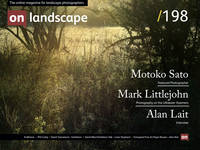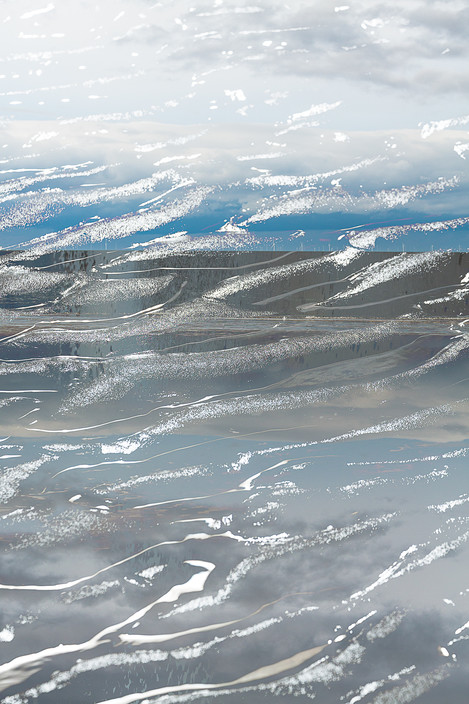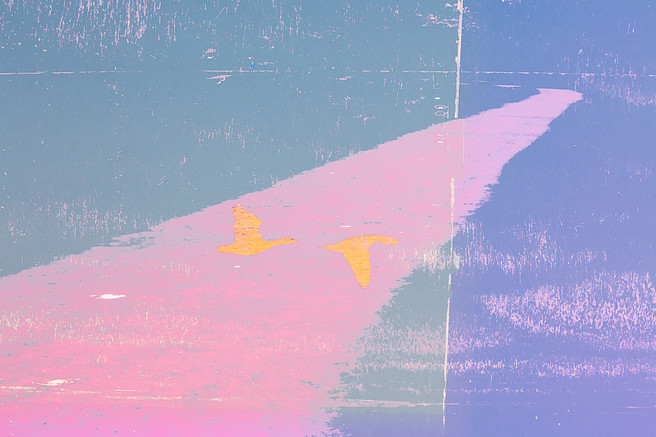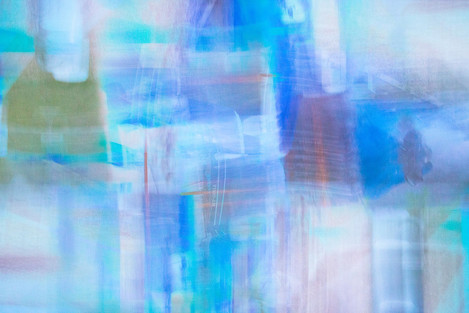Exhibition at The Yarrow Gallery, Oundle

David Townshend
David Townshend is a retired Government scientist with a career in nature conservation. He has been a landscape, nature and garden photographer for many decades, particularly enjoying close-up photography. He now specialises in creating impressionist and abstract images of landscapes in all their forms. He loves the creative freedom that comes from this approach. He is mostly likely to be found with his camera on the coast or in his garden.
David Townshend’s exhibition ‘Creating Good Impressions – where art meets photography’ takes place at The Yarrow Gallery in Oundle, Northamptonshire from 10th to 24th January 2020.
It features seventy abstract and impressionist landscape works created locally and as part of his ongoing Coastal Impressions project. Ahead of the exhibition, David shares his thoughts on what inspires his photography.
My exhibition is of impressionist photography, a style that I have been exploring over the past three years.
As a young lad living in coastal Norfolk, l was a keen birdwatcher and naturalist. I took up photography as a teenager, taking images of the things that interested me, always outdoors. I tried birds but, beyond the gannets on a trip to Bass Rock, they were too far away! I was happier taking photographs of wildflowers, landscapes, gardens and architecture. I rarely shot in black and white, and have always loved colour. My interests are pretty much the same now, and for many years my best work has been taken with a macro lens and tripod.
I trained as a scientist – I did a PhD on shorebird ecology, studying grey plovers and curlews at Teesmouth on the coast of North East England. My career was in nature conservation, working for the UK and then English government agencies. My role was to protect sites and species in coastal Northumberland and then in Devon & Cornwall. Latterly I produced reports on the state of England’s wildlife. As a consequence, I tended to view the world in a scientific, objective, literal, ‘accurate’ way.
I am not a great traveller and not one to hunt out photographic honeypots looking for the depressions in the ground to place my tripod for the ‘trophy’ shot that so many others have already taken. I much prefer doing something different and increasingly I enjoy creating interesting images from ordinary subjects.
In my plant macro photography, I began exploring different, more artistic ways to create images, particularly using very shallow depth of field. This resulted in my successful panel of images for a Royal Photographic Society Associate Distinction in 2015. It was based on a plant in my garden – Astrantia or masterwort, with its small but complex flowers. The whole panel was created from one plant, indeed from one side of one plant, in a border. All the images were taken back-lit early in the morning during the 3-4 week flowering period. The key pieces of equipment were my macro lens, my tripod and a garden chair!
With the freedom of retirement, I continued to challenge my in-built objective, scientific approach to plant photography and to discover my artistic side. Grasses moving in the wind has proved another productive area.
Then in 2016, I began a new phase in my photography, expanding my non-representational approach beyond plants to landscapes in all their forms. This was stimulated by the inspiring workshops run by Valda Bailey and Doug Chinnery. They teach the use of multiple exposure and camera movement techniques to produce impressionist and abstract images. And, most importantly, they then encourage you to use your camera, take chances, create images and develop your own style. Discovering and exploring this impressionist approach has given my photography new impetus and purpose, and I continue to enjoy and benefit from the stimulation of Valda and Doug’s workshops and Facebook group.
Three years on, I am evolving my own style, developing a major project and holding my own exhibition.
Style
My style is to use multiple exposure and camera movement techniques to create images that interpret light and colours, shapes and patterns in landscapes, in the broadest sense. Some of my images are pure abstracts, but in much of my work, I combine elements present at that location at that time on that day to create a sense of place. Because I capture the moment in-camera rather than compose on the computer, my images are the product of spontaneity, serendipity - and a bit of fun.
Impressionist photography appeals to me because it provides the opportunity to be creative. I am able to present a different take on the world around me, producing unique images that sometimes challenge you the viewer, invite you to pause and explore but perhaps with a reward when you recognise a pattern or place. The results I hope are striking, intriguing and sometimes enigmatic, like a half-recalled memory tantalisingly just out of reach.
I hope that others enjoy or at least engage with my photography, and my exhibition gives me a chance to share some of my favourite images. But I am fortunate enough (perhaps old enough?) not to crave social (media) acceptance from others. If I like my best images then that is enough for me – and I do!
Technique
All the images are created in-camera at the point of capture. My camera allows me to choose from various exposure blend modes, and vary the number of exposures, shutter speed, focal length, white balance and of course viewpoint in creating the final composite frame. All are hand-held - one of the cardinal Bailey/Chinnery rules is to leave your tripod at home!
Subsequent editing in Lightroom is limited to basic adjustments such as exposure, vibrance, tone curve and white balance. However, I have found that the freedom with which I tweak images has increased as my personal style develops. But the technique is not an end in itself, rather a tool to release creativity.
The exhibition
My exhibition of impressionist and abstract photographs is in two parts. The first is of images created locally, of landscapes and historic buildings such as Cambridge colleges captured in unexpected ways. There are also multiple exposure images taken in my garden.
The second part comprises images from my Coastal Impressions project - my interpretation of the English coast. Through patterns, textures or pure abstract, I interpret our coastlines, both broad landscapes and the intimate details of creeks, boats and moorings. The exhibition images include not only iconic subjects such as Lindisfarne Castle and the Thornham coal barn, but also the ordinary or mundane, even concrete wartime defences. The majority of my Coastal Impressions images are created on the Northumberland and especially the Norfolk coasts, areas I know well and visit most frequently, but I am now expanding my portfolio by visiting coasts around the country, always trying to capture a sense of place.
This project was the product of a new photographic approach and my life-long affinity with and love of the coast, but it was given a great boost by a chance encounter. Soon after I started taking impressionist landscape photographs I happened to show some on the back of my camera to my wife’s weaving tutor Melanie, who lives on the Norfolk coast. She was so taken by my images that she has based three textile design challenges and two exhibitions including the work of more than 50 textile artists, all based on sets of my Coastal Impressions images. Thanks to her encouragement I have gained the self-confidence to produce two Coastal Impressions books and hold my forthcoming exhibition.
‘Creating Good Impressions – where art meets photography’ is being held at The Yarrow Gallery, 2 Glapthorn Road, Oundle, Peterborough, PE8 4JF from 10th to 24th January 2020. The gallery is open daily, Mon-Sat 1030-1300 & 1430-1700, Sun 1430-1700. For more information on the gallery website.













